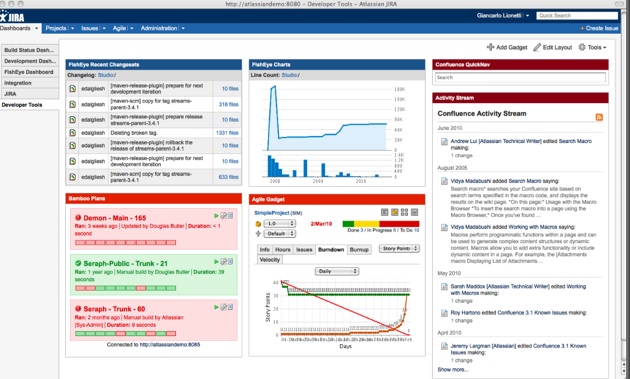
It is not often that a company’s first round of venture funding comes in at $60 million and eight years after it was founded with $10,000 worth of credit card debt. But Atlassian, which was founded in Sydney, Australia in 2002, is taking its first venture money today from Accel Partners. The company pulled in $59 million in revenues in its fiscal year ended June 30, 2010, and has been “profitable from Year One,” says co-founder and CEO Mike Cannon-Brookes.
The money will be used to give some liquidity to the founders and employees, expand its product portfolio, and possibly acquire other startups. In order to get a return on its minority stake, Accel is expecting Atlassian to one day have a very successful IPO. But Accel partner Richard Wong is in no rush. He thinks an IPO is likely once the company passes $100 million in revenue. And if revenues continue to grow 30 percent a year, that will be only a few years away.
Atlassian makes product development software (for making software) that is used by 20,000 customers around the world, including Facebook, Zynga, Cisco, and Adobe. “In our belief,” says Wong, “these guys are the standard in product development software—20,000 customers can’t be wrong.” Its products include the Jira bug tracker, Confluence wiki and collaboration suite, and a host of software project development tools.
Wong compares Atlassian to Salesforce, except without the sales people. Atlassian has 225 employees, but hardly any in sales. The company spreads virally within organizations. “In the same way that Salesforec.com is about streamlining collaboration, this is about streamlining the product development process.” Atlassian offers its products both behind the firewall on a company’s own servers and as a software service, and its pricing is an order of magnitude below what something like IBM’s Rational Software would cost.
Atlassian’s products bring a familiar interface to enterprise software. “It is a little more modern in thought,” says Cannon-Brookes, “a bridge between enterprise software and the consumer world.” The interface bring in elements like activity streams and avatars familiar to engineers and product managers from applications like Facebook.
